The organising mistakes that are making your home messier
Banish the clutter by avoiding these organisation blunders
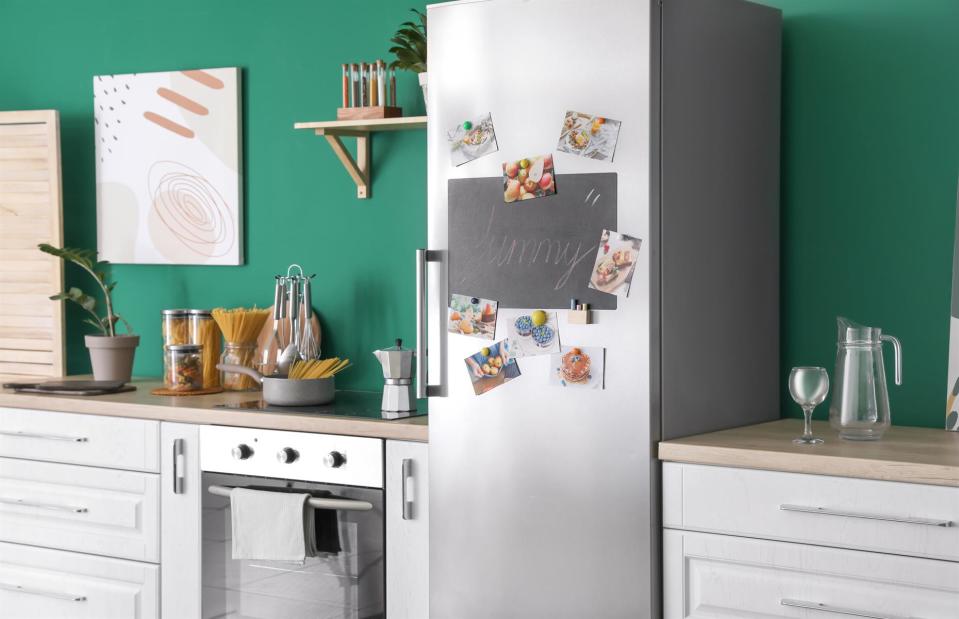
Pixel-Shot / Shutterstock
An organised home is a happy home, but are your organising solutions (or lack of) making your home look more cluttered? From trying to do it all at once to bigger problems such as kitchen shelf carnage, these are the common culprits that can make your home look messy and, importantly, the expert solutions to rectify the misrule.
Having too much furniture
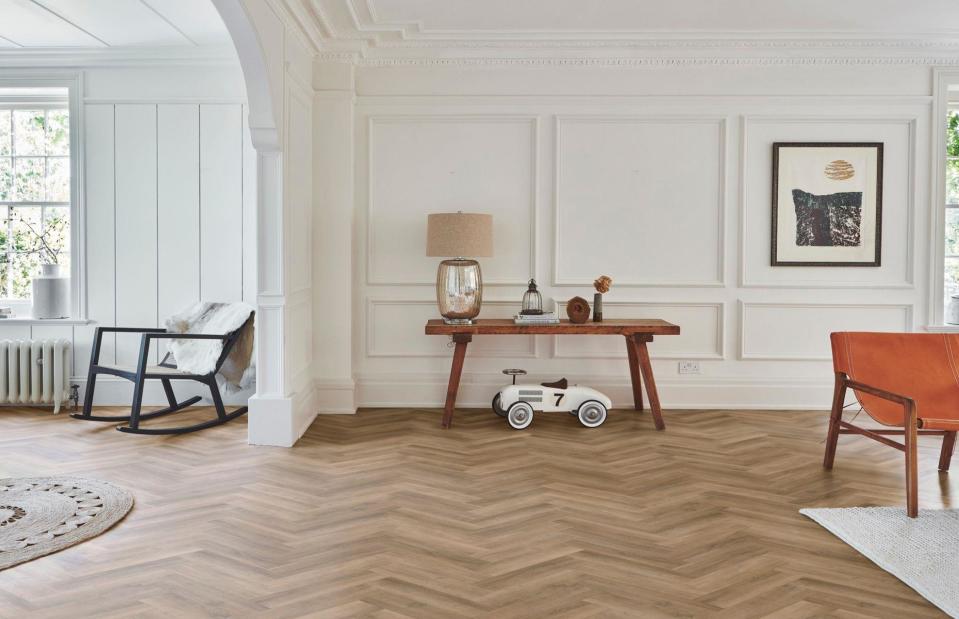
Ca' Pietra
We all love shopping for furniture, but if you head out to buy without a plan in mind, you could easily end up with a house full of items that don't complement each other, or fit your rooms. Having too many furnishings, or pieces that are simply too large for the space they're in, can make your house seem overcrowded and messy.
"Don’t fill every inch of the rooms in your home with furniture," Julianna of The Simplicity Habit suggests. "Remove pieces that you aren’t using or that are crowding the space."
Too many cables and cords
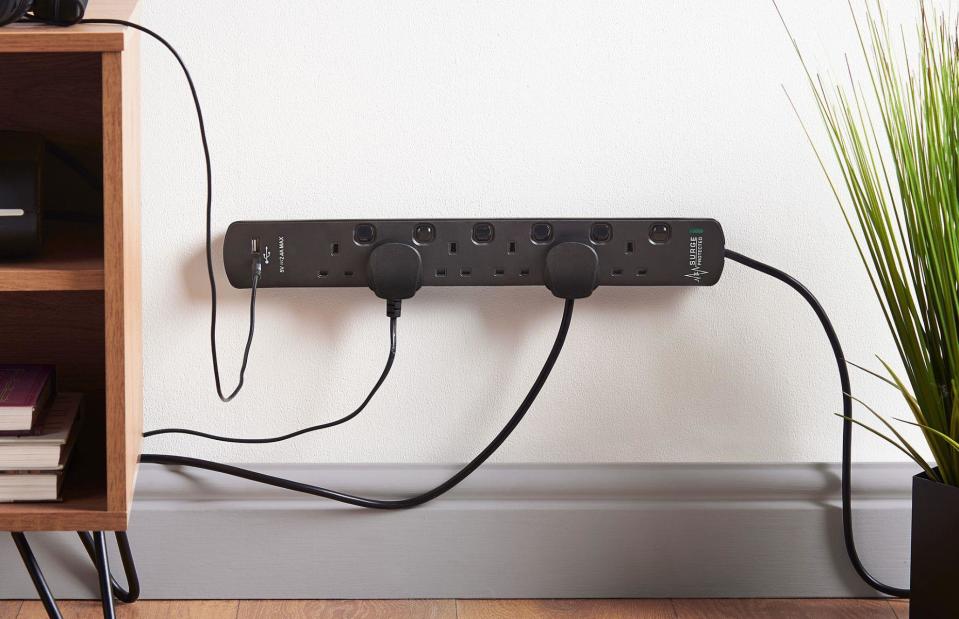
VonHaus
From the television cord to the extension lead that's allowing you to power your PC and plug in the vacuum cleaner all at once, cables and cords can look seriously untidy and unattractive – not to mention they can be a real trip hazard!
"Power cords can clutter up precious counter space. Keep them under control by adding a stick-on cord keeper," Good Housekeeping recommends. Extension leads can be installed onto walls or tucked away in a cable tidy box, so that they are not on full display.
Not giving decluttering and organising the time it deserves
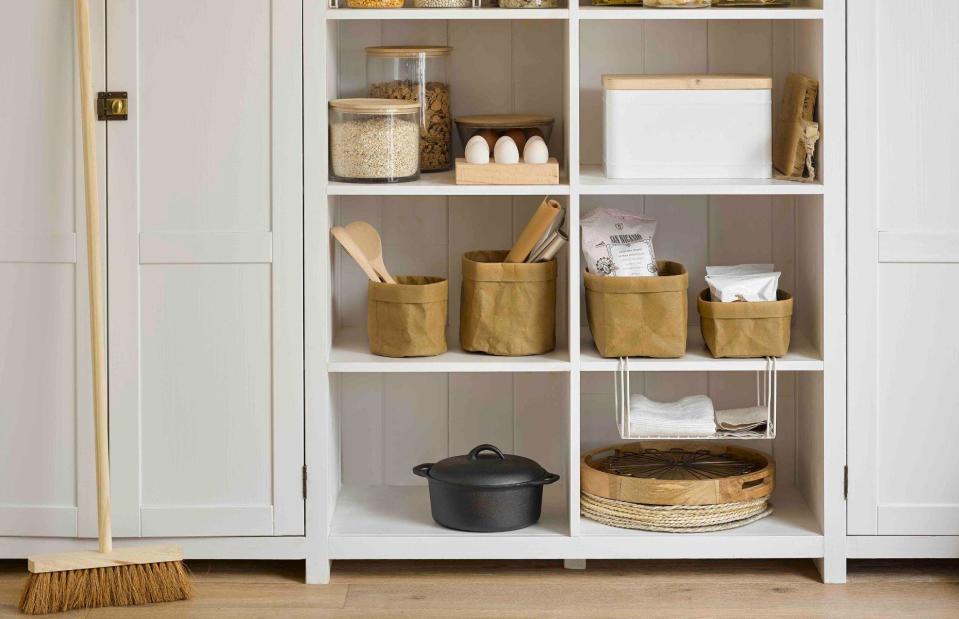
Garden Trading
It goes without saying that home organising is never an easy or speedy task. Creating a tidy, well-organised home takes time and patience. So, if you try to rush it without a plan, or try to do too much at once, you could end up losing your motivation, or even giving up entirely.
"Instead, give your decluttering, cleaning and organising processes the time they deserve," Sarah Seguin of QC Design School suggests. "This will help ensure that you do a thorough job and end up with truly organized spaces."
Failing to reorganise
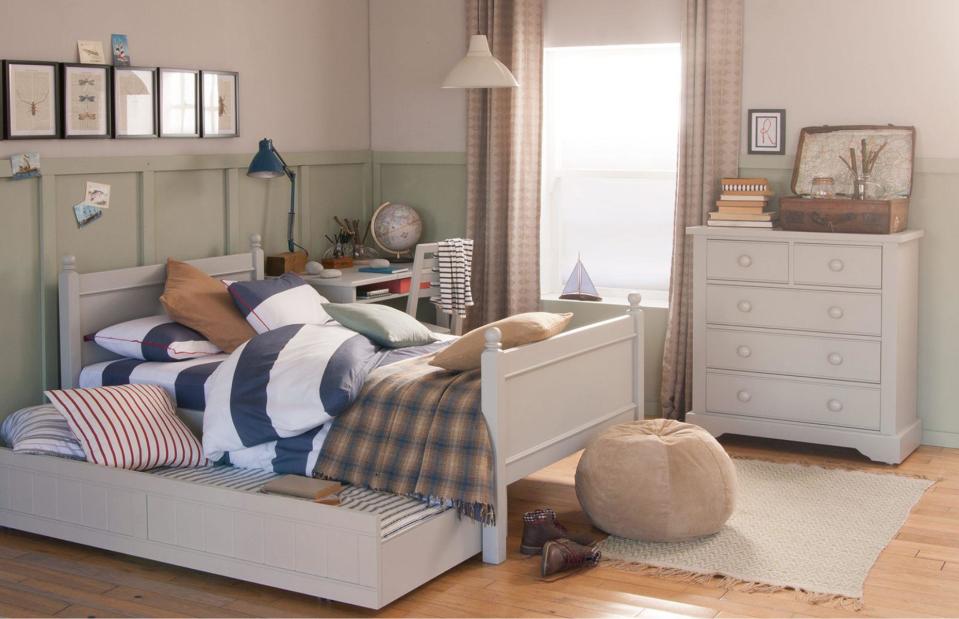
Little Folks Furniture
As well as initially taking your time with your organisation, it's also essential that you regularly reorganise, in order to keep your home as efficient as possible. Have you noticed that certain storage areas aren't really working for you? Is your hallway cupboard the messiest part of the home? Then it might be time to rethink these spaces and how they're arranged.
"Perhaps a seasonal approach will help you to keep on top of things," suggests Millie Hurst of Homes & Gardens. Organise an area of your home before autumn and then again in spring.
Buying organising boxes before decluttering
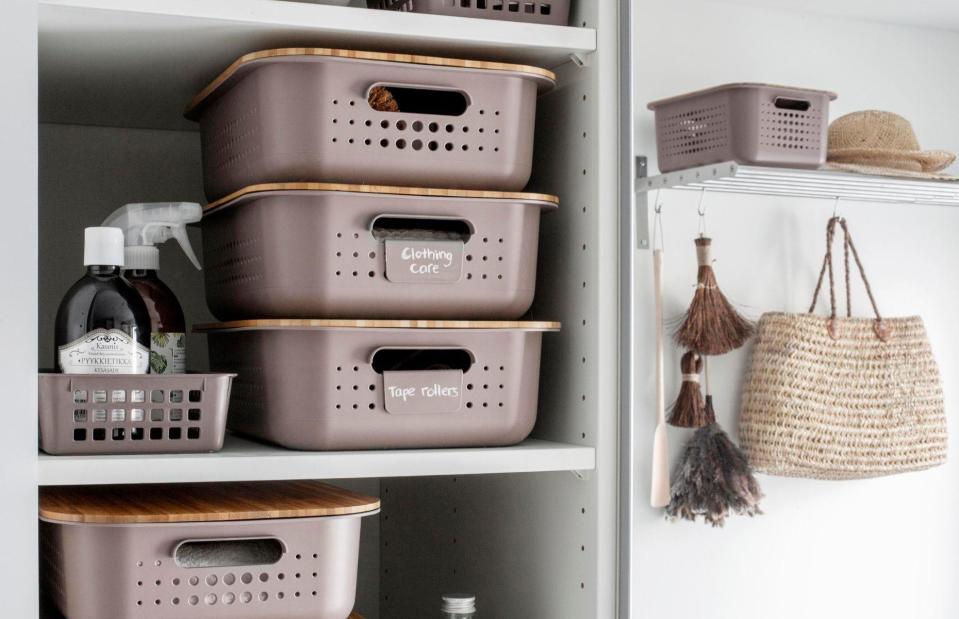
Orthex Group
While they're great for organising your belongings and storing them neatly, storage containers can also facilitate an 'out of sight, out of mind' approach. Professional organiser, Vanessa Hayes, finds that buying organisers before you've decluttered only adds to the huddled home headache.
"Instead, you need to edit your stuff first, then decide on products to help you organise what's left," she says. Then measure up the storage spaces you have to work with. If you buy too many boxes, you might be tempted to fill them all and keep more of what you don't need.
Not having enough shoe storage
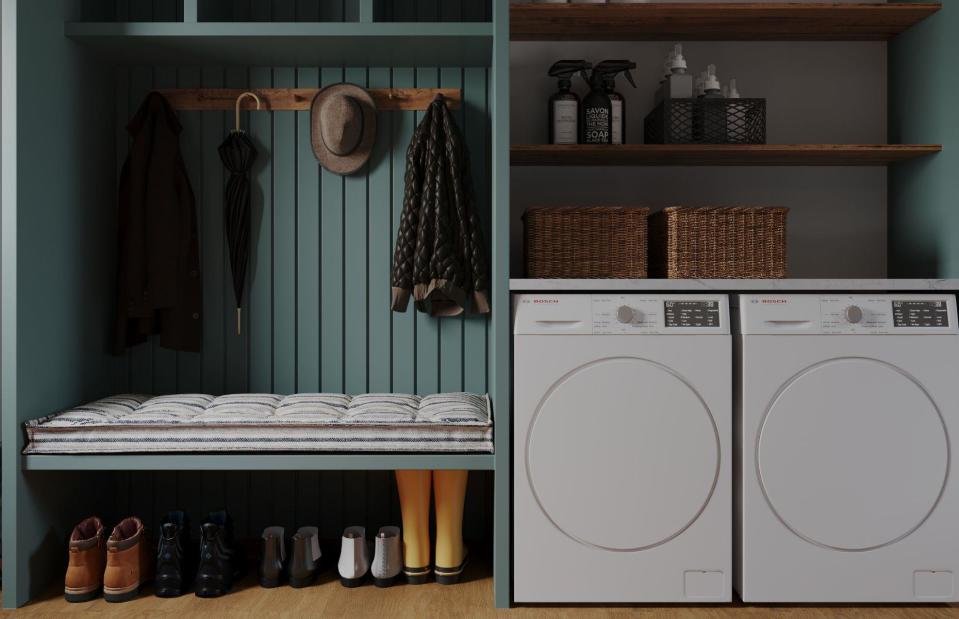
The Wood Flooring Co.
Nothing looks messier than a floor full of shoes, so it's important to factor in enough storage space for the whole household's collection. If you're short on space, shoes that are used less regularly can be stored elsewhere.
If you find that even with storage, shoes end up cluttering your floors, then professional organiser, Alejandra Costello, suggests placing "a basket by the door to toss shoes inside. If the shoes can make it inside, it can make a huge difference." Then, empty the basket every couple of days and rehome the shoes to the correct shoe rack or cupboard.
A full fridge door
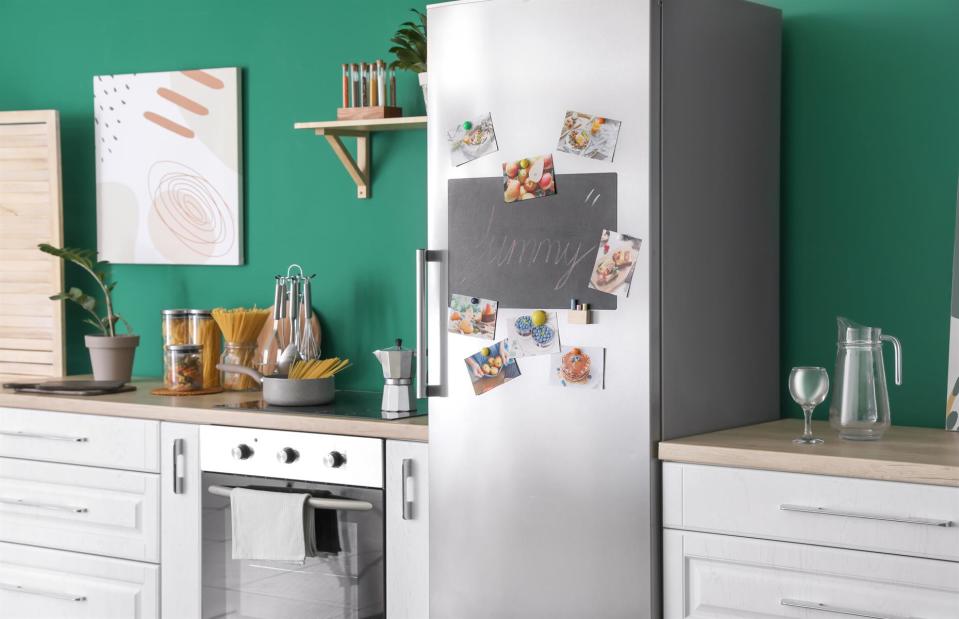
Pixel-Shot / Shutterstock
It's good to have a family home organisation hub, but a fridge front full of magnets, Post-its, photos and reminders makes for a big, messy focal point in the kitchen.
"Instead, keep one clipboard...with all reminders and lists you need. When the clipboard is full, that's your maximum number of papers you can keep," advises professional organiser, Jeni Aron from Clutter Cowgirl.
Hanging onto seasonal wear
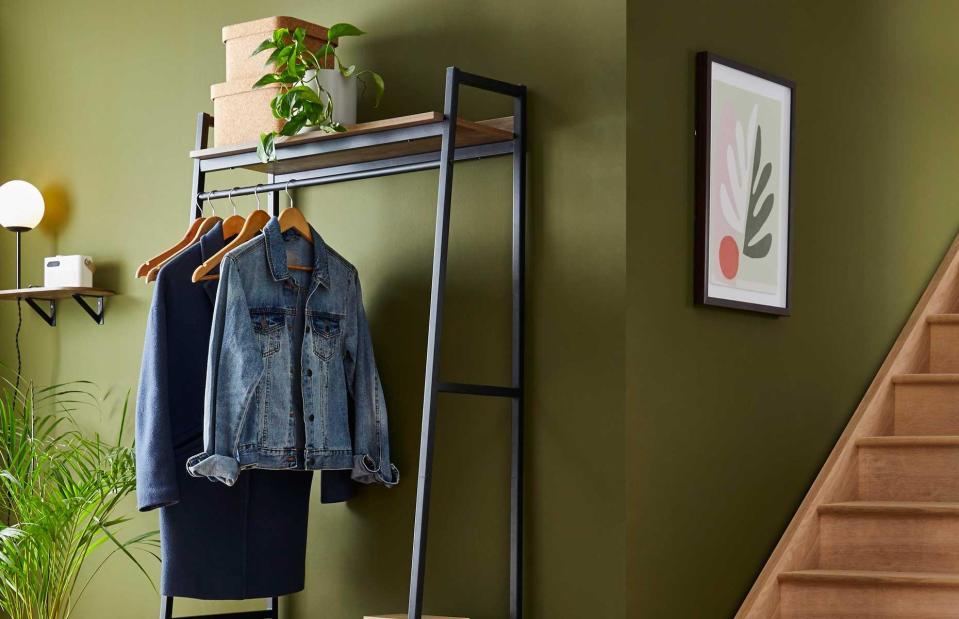
Dunelm
Keeping too many coats in the hallway creates a cluttered first impression. Plus, rummaging through mountains of denim jackets, winter coats and rainmacs to find appropriate outerwear is stressful, especially when running late.
Make outings easier by only hanging one or two season-appropriate coats for each family member in the hallway. Perhaps keep an extra in the wardrobe but then label and store the rest and switch as the season changes.
Cluttering up kitchen surfaces

Cult Furniture
Organising your kitchen could feel like a big task, but it can be a simple process, if you follow the advice of organisation guru, Marie Kondo. Too many small appliances and utensils can make even a well-designed, brand-new kitchen look in disarray, creating visual clutter.
Kondo therefore suggests keeping your kitchen counters free of items for easy cooking and cleaning: "Keep work surfaces clear and try to store all ingredients and utensils in cupboards or on shelves."
Keeping all cleaning products in one place
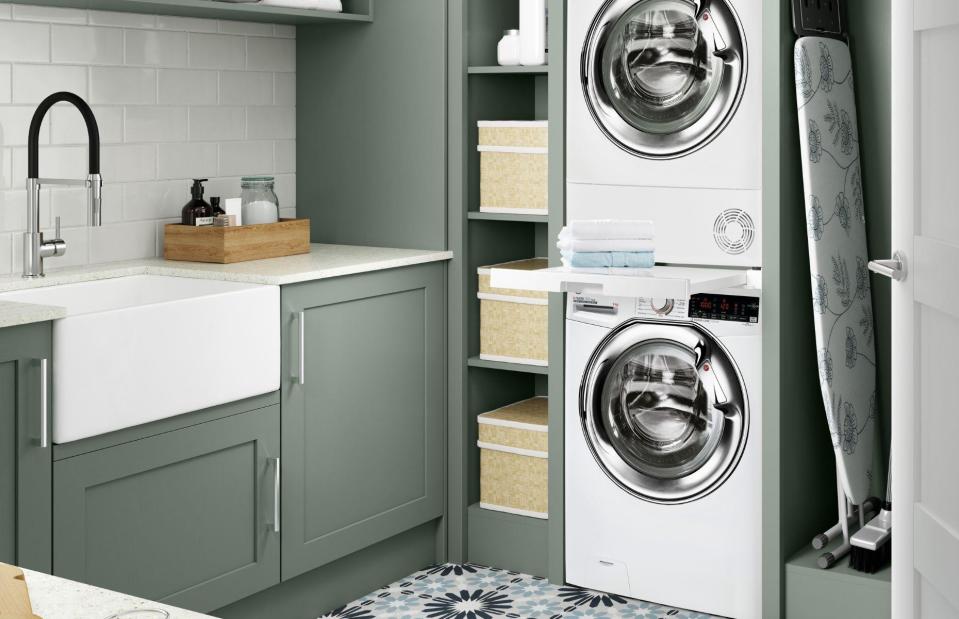
Benchmarx Kitchens
Multiple bottles, cloths and sprays can create a cramped and muddled mess underneath your sink. Make cleaning easier by safely storing supplies in other rooms, too.
For instance, keep bleach and bathroom cleaner stored in the bathroom (out of reach from children) and laundry supplies close to the washing machine. A dustpan and brush are handy hidden away in the hallway, for excess mud that may have come in with pets and shoes.
Not having a home for everything

Et Lorem
As much as a minimalist home sounds idyllic, accumulating stuff is in our nature. Avoid the crowded feeling by adopting the 'a place for everything and everything in its place' mantra. Giving practical possessions a home stops it from becoming clutter and it makes it easier for the whole family to get involved when clearing things away.
"It’s important to involve the whole family in the process," says Sarah Seguin. "Everyone should have a say when it comes to which items stay and go, as well as how they should be organized."
Overloading display cupboards
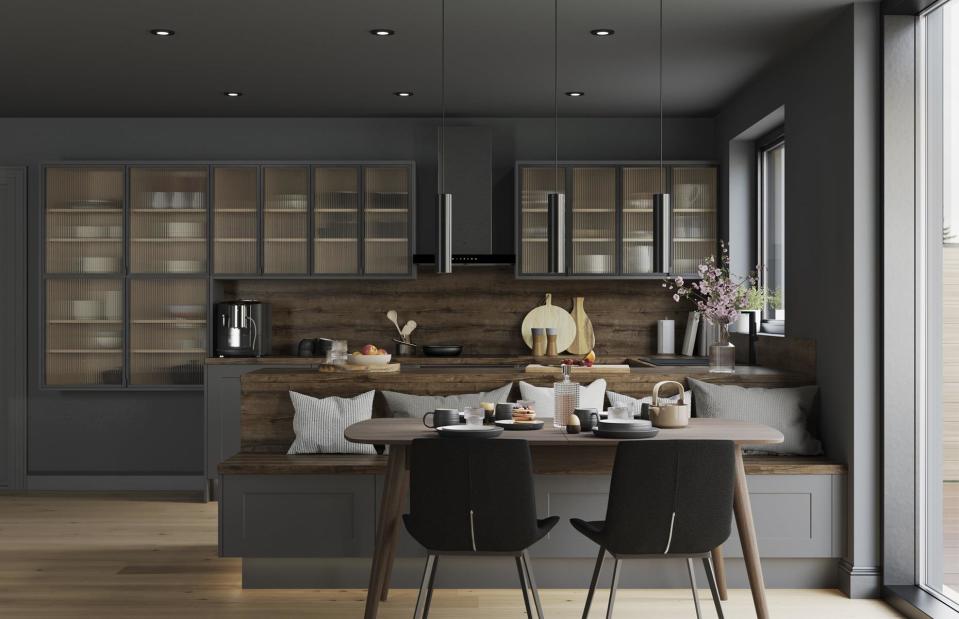
GoodHome brought to you by B&Q
Glass-fronted kitchen cabinets can be an asset, but not if they are crammed full of mismatched crockery or food products. Use the display cupboards to your advantage by sticking to complementary colourways and stacking the same items together.
This will not only make it easier to access items, but will keep the visual display looking neat and tidy.
Not using drawer organisers
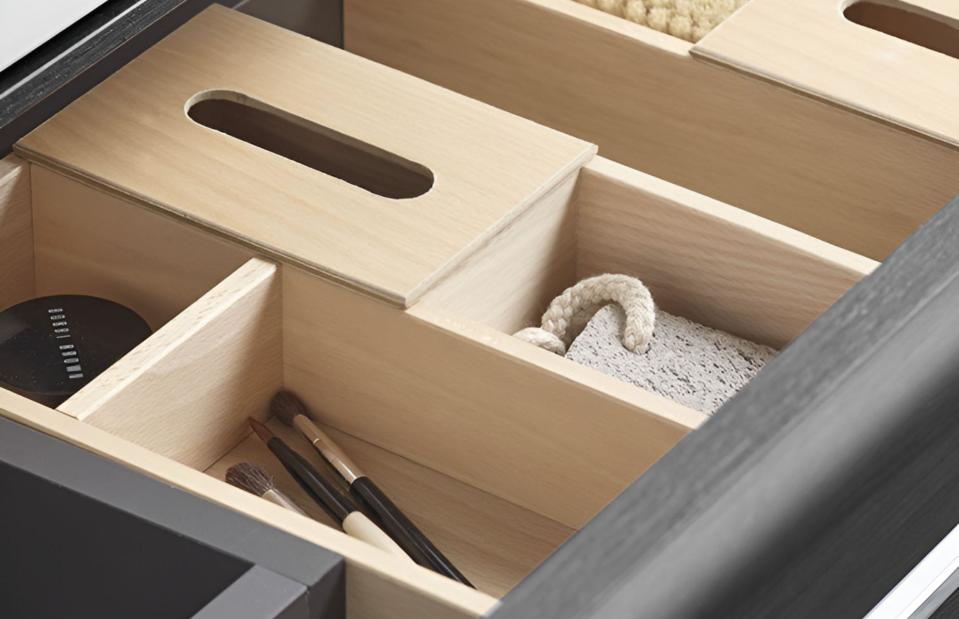
Sanctuary Bathrooms
All those bits and bobs may be out of sight and out of mind when the drawer is closed but it will soon be a problem when you are looking for a tape measure that was stashed in there. Have a clutter cull to get rid of duplicates or items that haven't been used in a while.
Then, divide the drawer diagonally for the best use of space, or fit a drawer organiser that provides different spaces for different items. This will instantly allow you to streamline your home and your belongings.
Not labelling everything
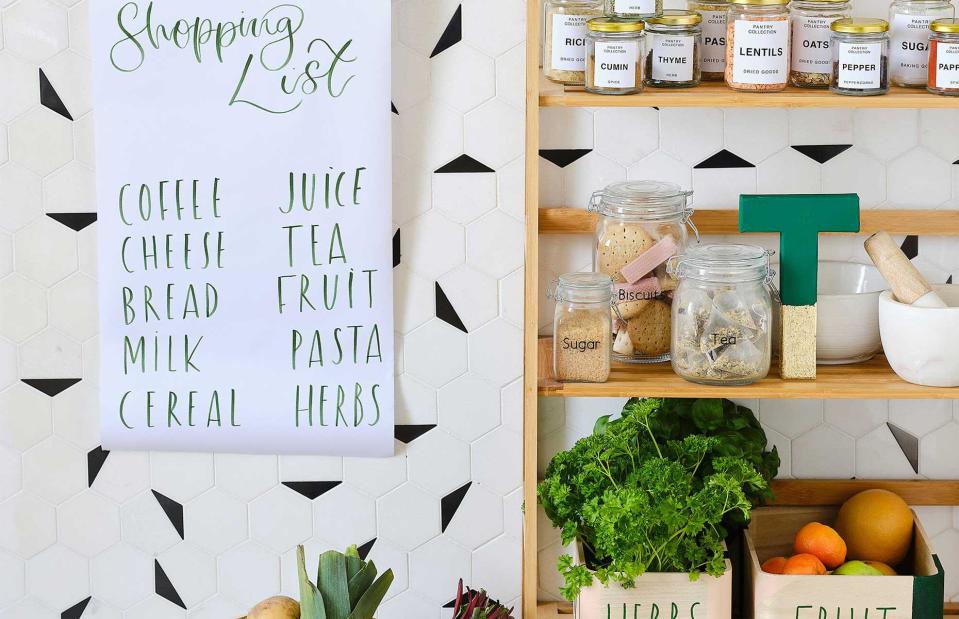
Hobbycraft
Hobbycraft Content Editor, Aisha Green, believes a kitchen without labelled storage simply isn't productive. After all, if you have decanted out everything and not labelled the jars and canisters it could take twice as long to find what you need.
"Labelling has become somewhat of an addiction – I've even labelled the fridge," she says. A Cricut machine will make labelling storage fun and easy.
Neglecting high and low spaces
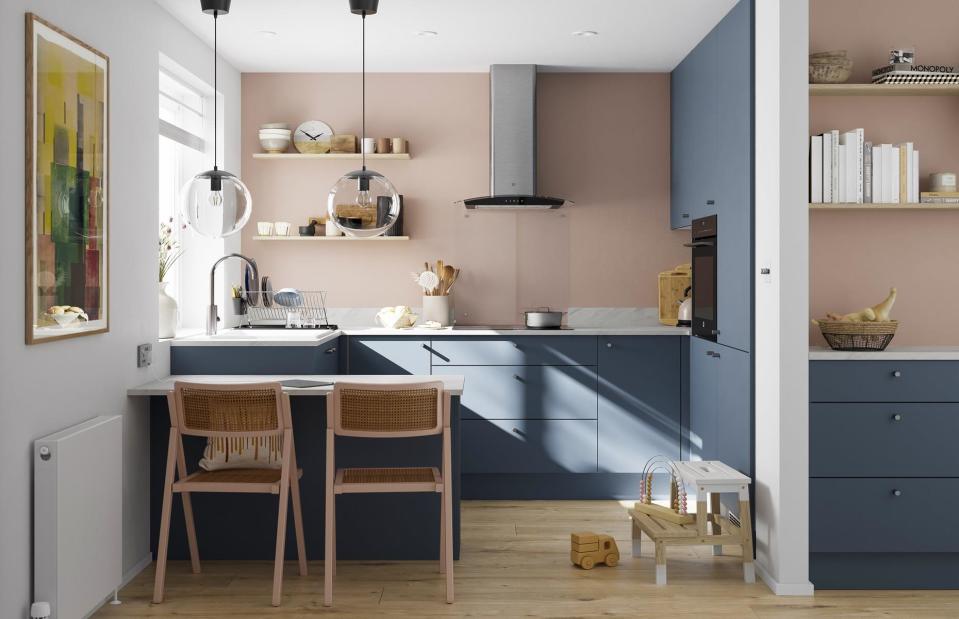
GoodHome brought to you by B&Q
When organising any indoor space, it’s essential to remember that your focus shouldn't just be on the main focal points, or areas at eye level. These forgotten spots can soon become overwhelmed with clutter. Similarly, access is important. You need to store items you use regularly in easy-to-reach spaces.
"A lot of times we forget to pay attention to access points," says Jill McMeekin, founder of J.Ryan Solutions. "This means that the easier a drawer, cabinet or closet is to access, then the stuff that lives there should be used a lot."
Not enough closed storage
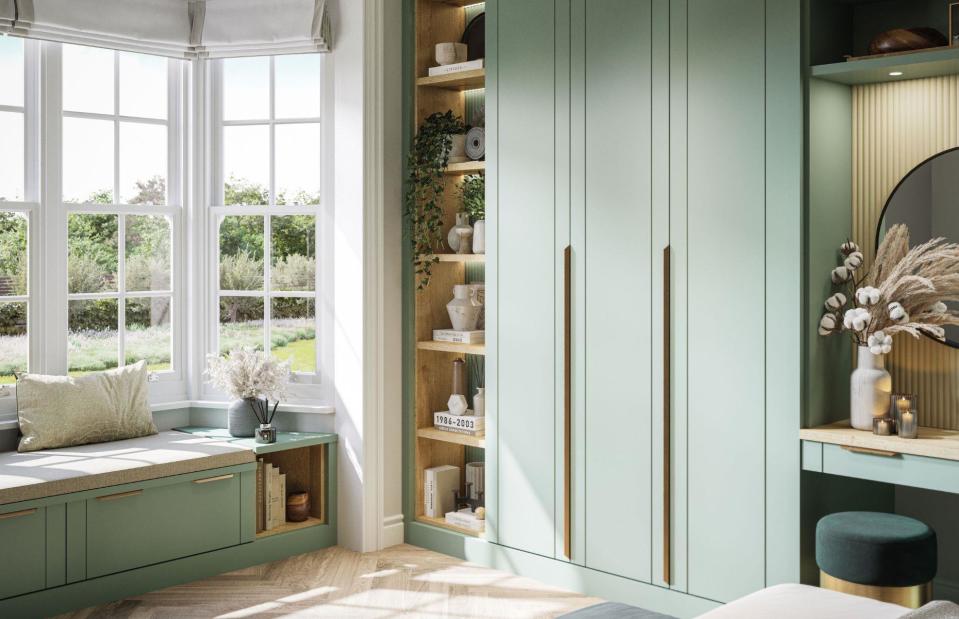
Neville Johnson
Different height shelves give you lots of storage options. But, books, magazines and general bits and bobs on all the surfaces can soon make a small room look claustrophobic. Instead, take advantage of closed storage.
Mix in files and boxes amongst decorative objects to hide away the small and messy items you need, but don't want on display.
Too much wall art
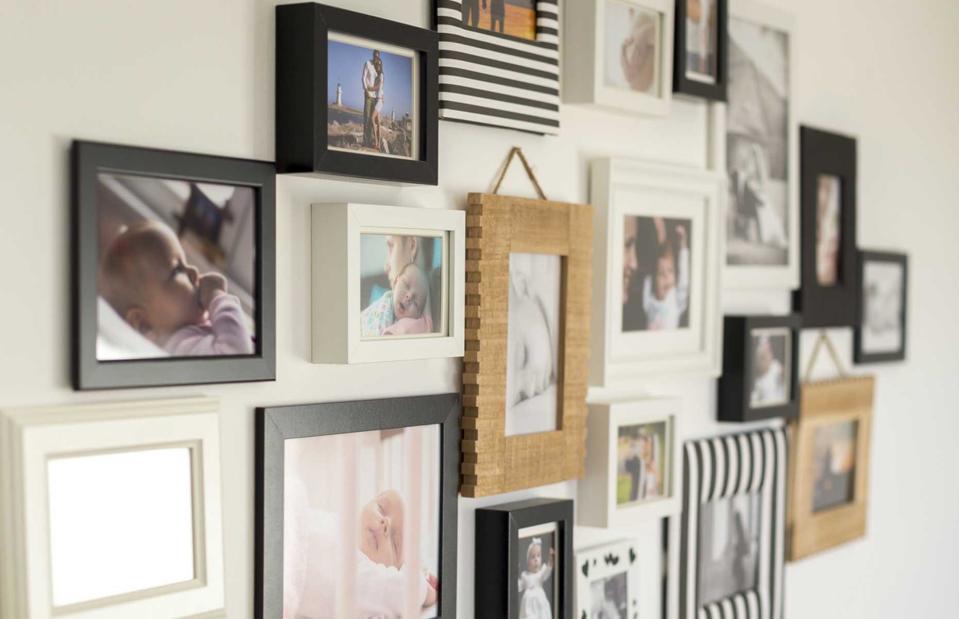
OndroM / Shutterstock
Gallery walls are super popular and can be visually stunning when hung right. However, getting the balance right can be tricky and there are lots of mistakes that can be made if the wall is not planned and measured properly.
While it's great to get that pile of prints and photos out of boxes (or off the floor), inconsistent spacing, fussy frames and overloading the wall can all lead to unbalance and a disorderly exhibit. It's better to stick to one or two frame colours and to go for larger pieces rather than lots of small frames.
Not sticking to the rule of three

Snug Sofa
Sideboards, shelves and console tables are ideal surfaces to display your wares. But, without sticking to certain rules your curated shelf can soon look completely covered and chaotic.
Instead, stick to the rule of three (or odd numbers) and make sure there is plenty of breathing space around each group.
Not picking up after pets
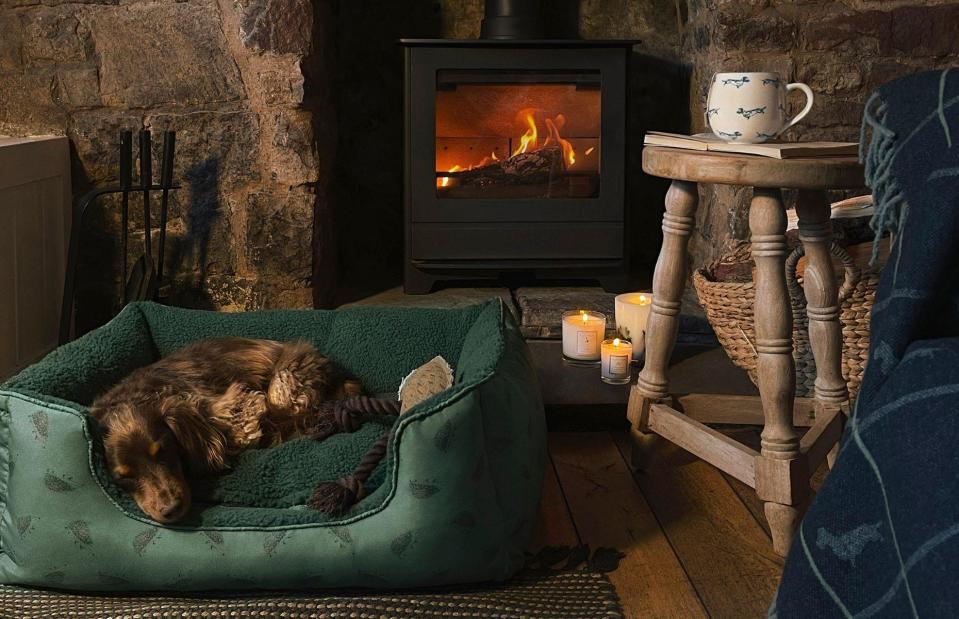
Sophie Allport
Pets can make a house a home, but that can soon turn into a mess if it's not pet-proofed properly. Allocate space for their things. Keep chew toys in a basket next to their bed and then keep shampoo, leads and any outwear (yes, pets have clothes too these days) in a closed basket in the hall or utility room.
Piling up paperwork

Africa Studio / Shutterstock
Do piles of paperwork on the dining room table or kitchen breakfast bar sound familiar? Just because they are neatly stacked doesn't make them welcome in a tidy and organised home, as clutter simply attracts more clutter.
Cassandra Aarssen owner of Clutterbug advises dealing with short-term paperwork and filing long-term documents straight away.
Working from home
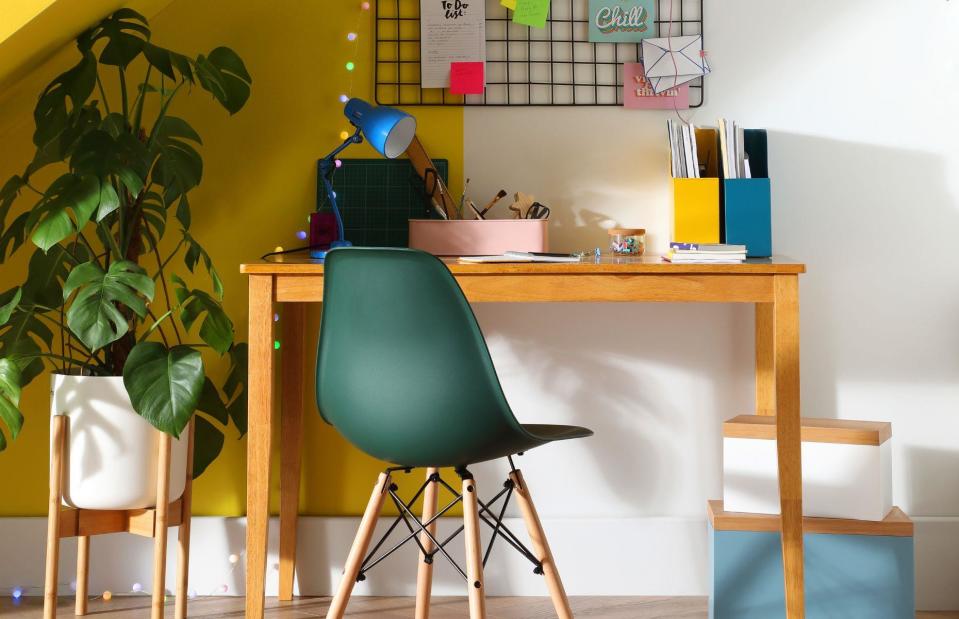
Furniture And Choice
Working from home is now the norm and enjoying work life in the comfort of your own home has many perks, but also a few cons; one of which is the mess it can bring with it.
It's vital to create a work area that can be put away at the end of the day or you could end up with a permanent pile of paperwork and Post-it notes in the study, or worse still, on the dining room table.
Not keeping like with like
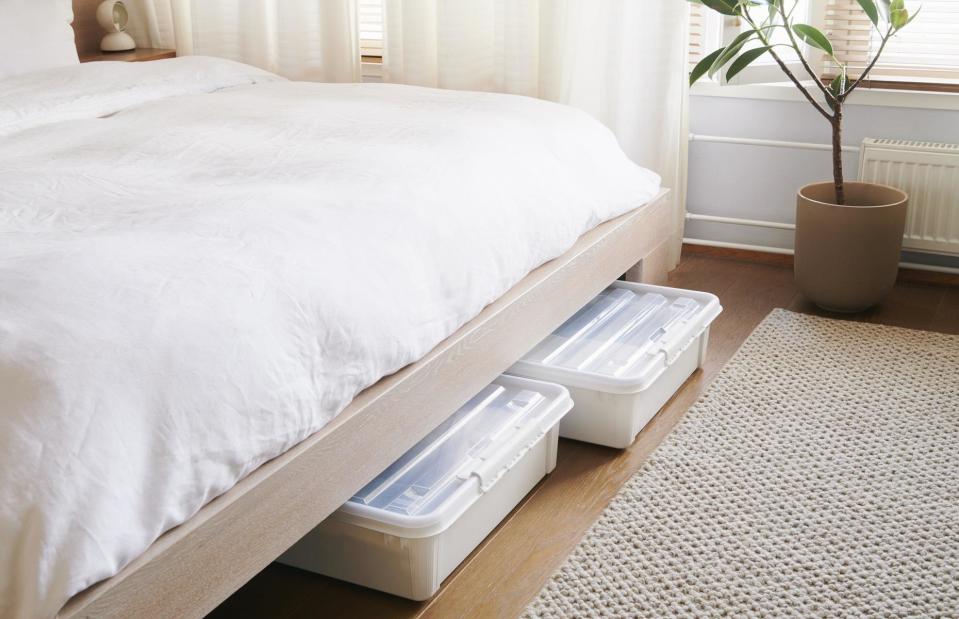
Orthex Group
Put those drawer organisers or under-bed storage boxes to good use and keep like with like. For instance, store all small electrical items like chargers, adapters and plugs together and create space for essentials, such as towels, blankets and spare bedding. It will save you time when you're on the hunt.
Also, organise items in a way that makes sense to you, such as storing electricals in your office and spare bedding in your bedroom.
Not living simply
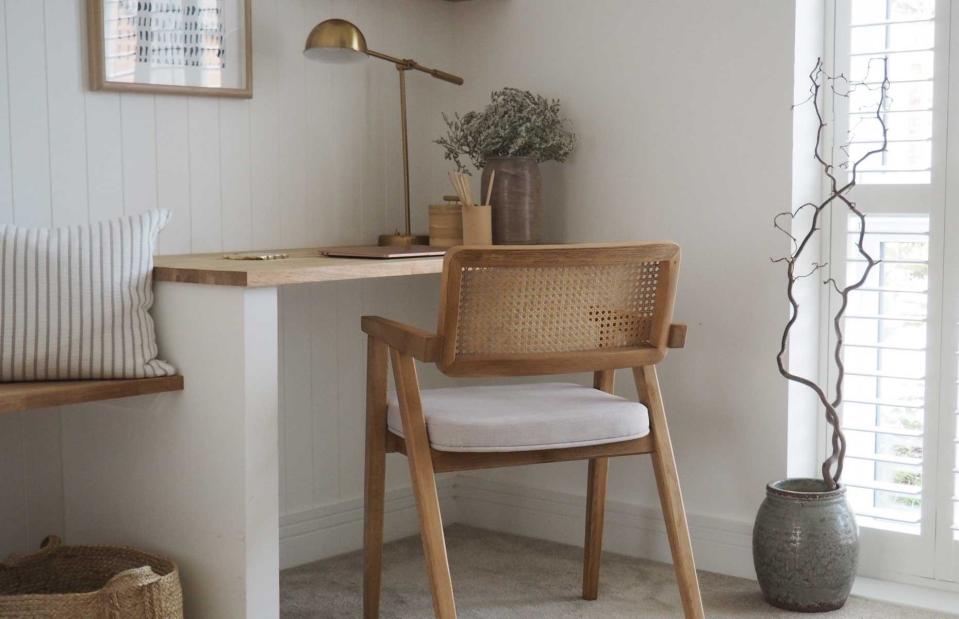
Cult Furniture
An organised home takes time to achieve but once committed you will soon reap the rewards. We live in a consumer society and are bombarded with marketing that is designed to make us buy more stuff. If you can sidestep this and learn to live with less, your home and mind will become less messy.
"Many of us are holding onto things that no longer serve a functional purpose in our lives," explains Julianna of The Simplicity Habit. "Whatever it looks like for you, figuring out what you no longer need to keep and actually getting rid of it will help you tremendously when it comes to organizing your home."
Bringing a chair into your bedroom
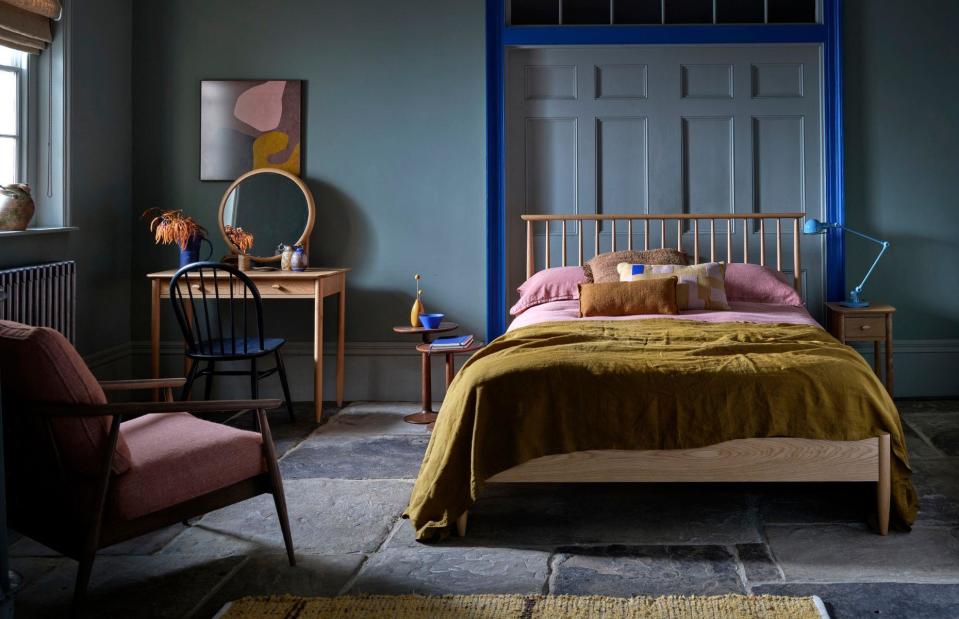
ercol
A bedroom accent chair may look desirable when perfectly positioned in a bedroom magazine shoot, but unless you're super disciplined, chances are it will soon be used as a fancy laundry pile stand or, worse still, a dirty laundry bin.
Also, unless you are blessed with a large bedroom it can make the space look cluttered. Avoid creating a chair-drobe by omitting a chair in your bedroom altogether, or be ruthless and either pop worn clothing in the laundry or hang it back up.
Not maximising wardrobe space
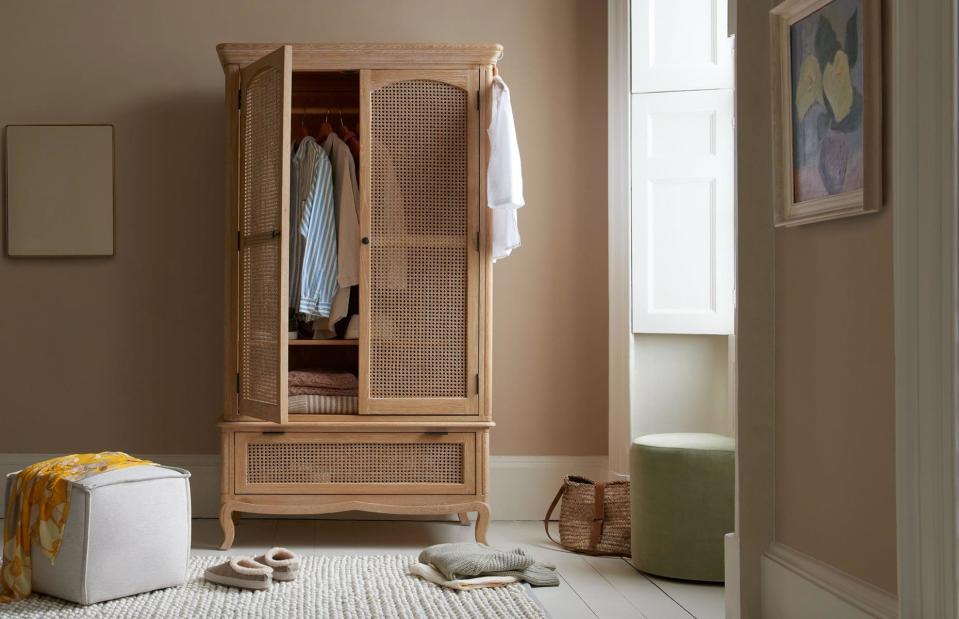
Loaf
A wardrobe with just a rail for clothes is a complete waste of space: clothes and belongings will soon turn into a mountain of mess. Organisation and additional storage aids are the keys to making the most of every inch of space.
"One mistake that many people make is creating an aesthetically-pleasing organized closet, but not one that actually works for their lifestyle," says Sarah Seguin. "So, when organizing your closet, make sure to take a step back and consider what will work best for YOU – both in terms of style and practicality!" Clear shelf dividers are great for storing bags, while stackable wardrobe boxes will allow you to neatly store everything from jeans to T-shirts.
Having mismatched hangers
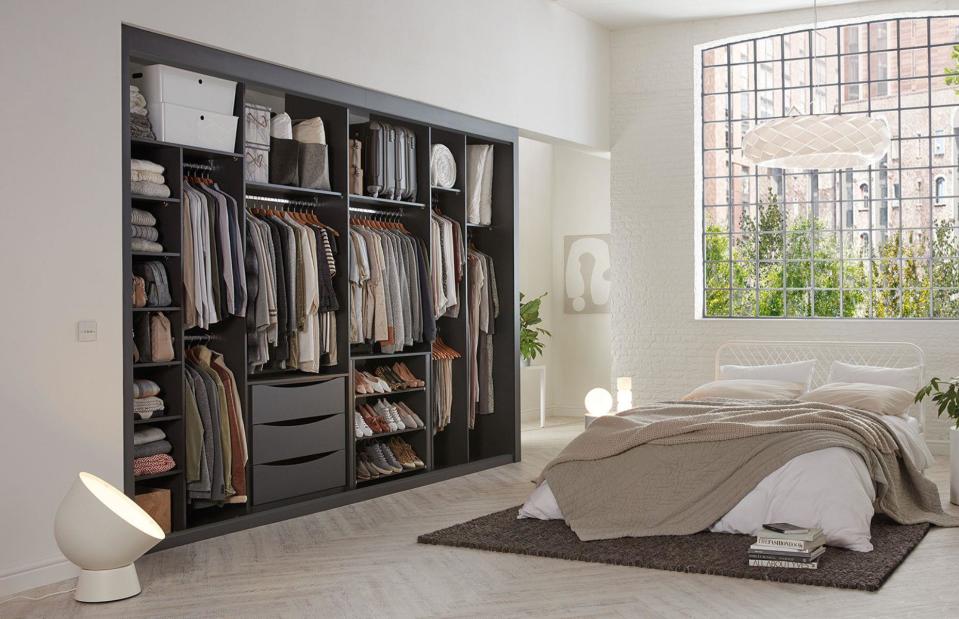
Sharps
Do you say 'yes' every time a cashier asks if you'd like the hanger on shopping trips? From now on, just say no! Plastic hangers in different shapes and sizes will make the rail look higgledy-piggledy. Elika Gibbs of Practical Princess explains why. "I like matching hangers because then you are not distracted by a messy wardrobe," she says.
Good quality hangers with rounded edges will give your wardrobe a boutique feel, rather than looking like a boot sale. Lastly, make sure garments you use regularly are within easy reach, even if the look is not Instagram-ready.
Not clearing out toys
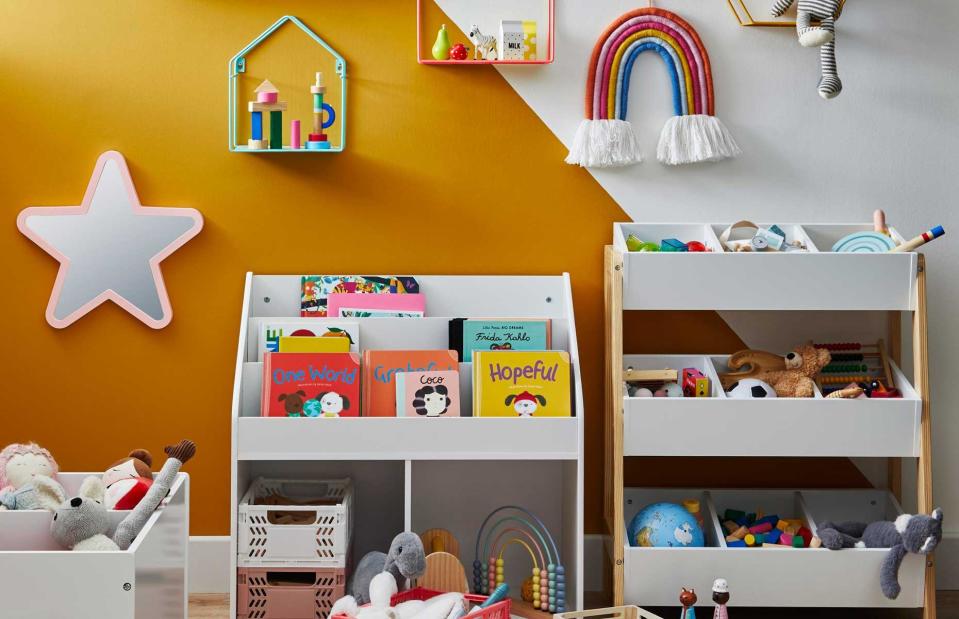
Dunelm
Homeowners with children will know how easy it is for kids' belongings to stack up. Avoid this by having a toy cull before Christmas and birthdays, and invest in some essential storage solutions. Or, put some toys away and start a carousel system – children love the surprise of toys they've forgotten about.
Francine Jay of Miss Minimalist suggests following the one in, one out system. "To keep your stuff level from rising, live by the following rule: every time a new item comes into your home, a similar item must leave."
Only having one laundry bin
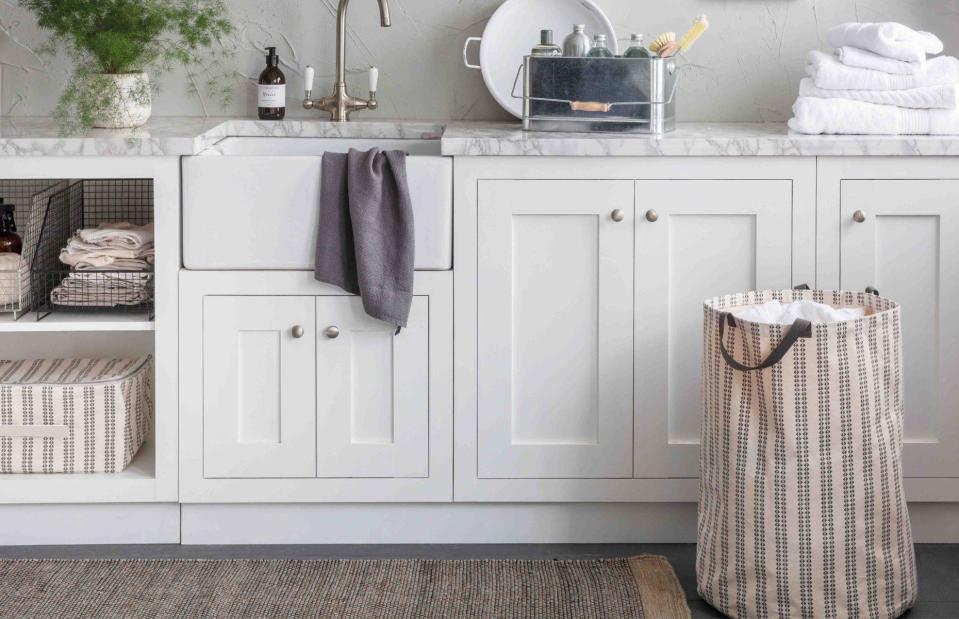
Garden Trading
Just one laundry basket can mean time is often wasted picking up dirty clothes from bedroom floors. Allocate a laundry basket for each family member, that they are responsible for. Other rooms that can benefit from a laundry basket are utility rooms, boot rooms and bathrooms.
Not donating enough
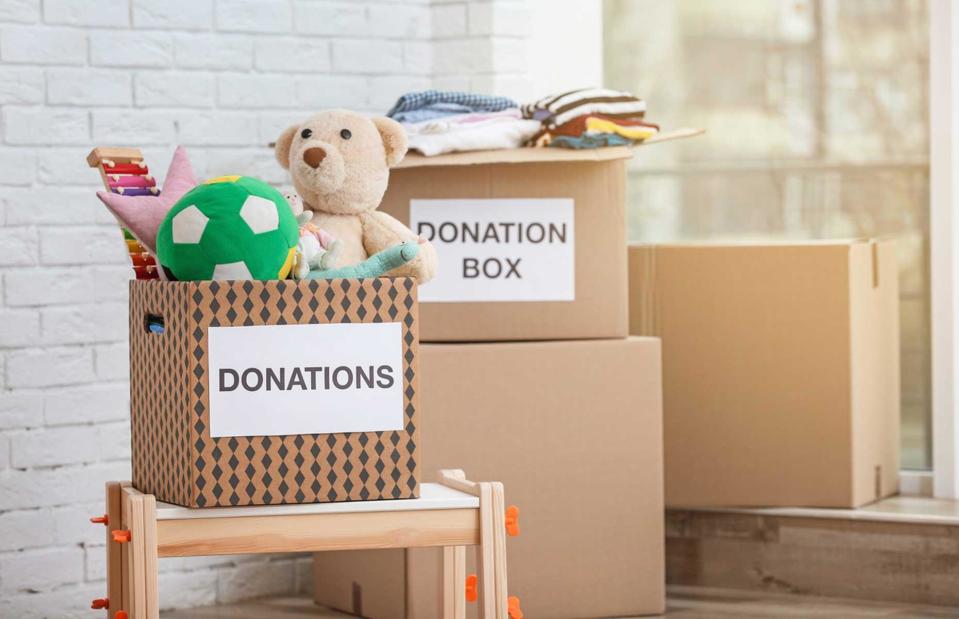
New Africa / Shutterstock
Just because you have decluttered once doesn't mean items won't soon pile up again. Try to allocate time each season to keep on top of what's come in during that time. Clara Schoen of The Home Organized recommends implementing a donations bin, where items can be placed when you've decided to let go of them.
It's vital that once the bin or bag is full, it's dropped off at your local charity store. She also suggests that having a regular clear-out helps us to be "more thoughtful" in our spending going forward.
Having unsightly bins on display
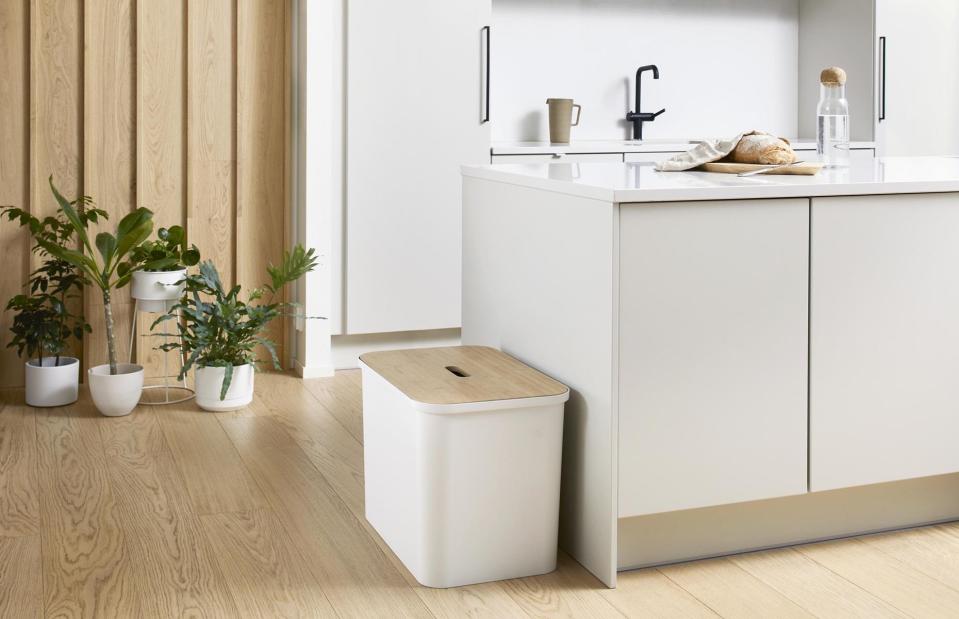
Orthex Group
From ugly plastic wheelie bins parked at the front of the house, to overflowing recycling boxes cluttering the entrance, having unsightly bins on display can really impact the look and feel of your home. Inside, choose waste and recycling bins that match your decor and don't stand out too much.
Outside, create more kerb appeal with a practical and attractive bin shed that will disguise the ugly trash cans, as well as protect them from blowing over and spilling rubbish across the garden.
Cluttering up open shelves
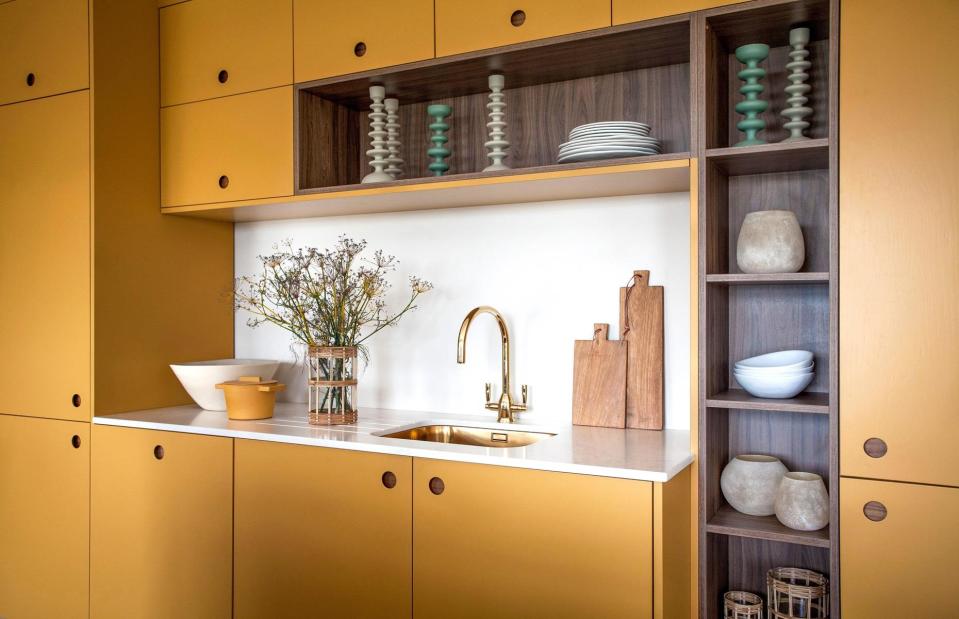
Naked Kitchens
Open shelving has been a hot trend for a while now, as it enhances the sense of space and can look super stylish. However, filling them up with too many items can have an adverse effect and make your room look cramped, cluttered and messy.
So, use open shelves for often-used items or decorative elements only. Plus, without the protection of closed doors, kitchen crockery and containers are exposed to dust particles and grease splashes, so more cleaning will be required.


